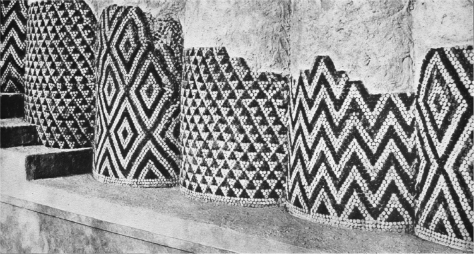Flower of Life versus Cownose
Square shape and square root of 2 are apparent on the Cownose pattern. Equilateral triangle and hexagon shape with the square root of 3 -property are fundamental in the FOL. All these properties were known by Old Babylonians as it is shown in the book A Remarkable Collection of Babylonian Mathematical Texts1 by Joran Friberg. See also clay tablets: IM 529162 and Susu3.
But there are incidents in the ancient history that urge the appearance of the FOL before 2000 BC. These incidents are the sexagesimal numeral system, rhombic cone mosaics, and six-petal cylinder seals.
Sexagesimal system
Sexagesimal place value system was known in the ancient Mesopotamia in the 3rd millennium BC. The geometrical link between a circle, a hexagon and the sexagesimal system is genuinely demonstrated by Jaime Vladimir4. He summarizes it:
...these geometrical facts show that there is a geometrical link between the circle and the sexagesimal system and that the division of the circle in 360 equal parts, which corresponds to 360 equal angles or degrees', isn't a choice that is completely independent of the geometry because this division can be suggested by the basic properties of the circles and the equilateral triangles.
The FOL and the sexagesimal system both share the same geometrical and mathematical properties. It means they would mutually benefit from the existence of each other.

Cone mosaics
The pillar cone mosaic5 from the ancient Sumerian city, Uruk (3400 - 3100 BC) shows a tessellation pattern. This 60 degrees zig-zag rhombus pattern formed by two equilateral triangles is inside the FOL geometry as well.

Cylinder seal
The Sumerian brown stone cylinder seal6 with two six petal rosettes originates from 3000 BC. Similar seals are repeatedly found from the late Uruk and Jemdet Nasr period (3100-2900 BC). See Ancient Near Eastern Cylinder Seals from the Marcopoli Collection7 by Beatrice Teissier. Six petal rosette is a partial symbol inside the FOL pattern.
Trivial design
The creation of the FOL symbol is begun by drawing six intersecting circles around the seventh central circle. The FOL is easier to draw than the Cownose since it can be done with a plain drafting compass (or a divider). In the FOL, you continue forming the pattern from direct intersection points. In the Cownose pattern, you need a more complicated procedure to find perpendicular lines and right angles with a more complicated procedure. We can verify this by doing both figures manually. Thus, we could expect to see the FOL pattern appear on artifacts before the Cownose.
But surprisingly, evidence based strictly on known artifacts is that four (and eight) -pointed shapes like the Cownose were antecedent and far more prominent. Only later on six-pointed shapes like the FOL seems to have been used as a decoration motif.
Based on the above considerations, we can safely make the next conjecture:
Prerequisite for the generation of the FOL was fulfilled in the ancient Mesopotamia already in the 3rd millennium BC. In the beginning of the 2nd millennium BC, people were playing with construction elements and patterns that we find in the Flower of Life symbol.
Strictly speaking, the first occurrences of the FOL are available on artifacts from 1600 - 1500 BC. And the first FOL as a complete symbol as Melchizedek has described it, is from Marlik, 1400 - 1100 BC. That is, if the occurrence from Abydos is not counted because of the debate on dating it.
- 2.2.1. Joran Friberg: A Remarkable Collection of Babylonian Mathematical Texts 2007 MS 3051 on the page 207
- 2.2.2.
- 2.2.3.
- 2.2.4.
- 2.2.5. wikipedia.org: Cone mosaic courtyard
- 2.2.6. christies.com: The Sumerian brown stone cylinder seal
- 2.2.7. Beatrice Teissier: Ancient Near Eastern Cylinder Seals from the Marcopoli Collection 1984 page 117, no. 18